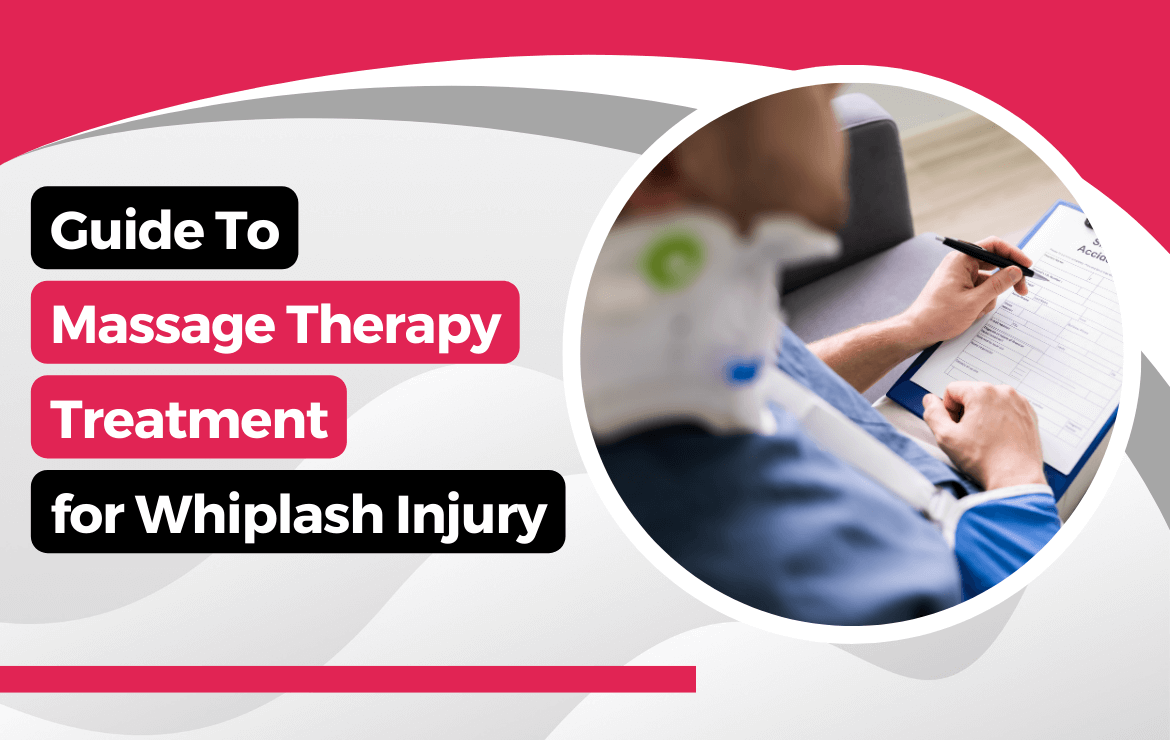Whiplash After a Car Accident: A Comprehensive Guide to Symptoms, Treatment, and Recovery
I got whiplash in a car accident? You’re not alone. Whiplash is a common injury that can be caused by a sudden jolt or blow to the head, such as those that occur in car accidents. While whiplash is often associated with high-speed collisions, it can also happen in low-speed accidents, especially if the impact is sudden and unexpected.
The symptoms of whiplash can varydepending on the severity of the injury. Some people may experience only mild pain and stiffness in the neck, while others may have more severe symptoms, such as headaches, dizziness, nausea, and pain that radiates down the arms or back. Whiplash can also lead to long-term problems, such as chronic pain, muscle weakness, and decreased range of motion in the neck.
If you think you may have whiplash, it’s important to seek medical attention as soon as possible. Early diagnosis and treatment can help to prevent long-term problems. Treatment for whiplash typically involves pain relievers, physical therapy, and exercises to strengthen the neck muscles. In some cases, surgery may be necessary to correct severe injuries.
Whiplash is a serious injury that can have a significant impact on your life. If you’ve been involved in a car accident, it’s important to be aware of the symptoms of whiplash and to seek medical attention if you think you may have been injured.
Symptoms of Whiplash
The symptoms of whiplash can vary depending on the severity of the injury.Some people may experience only mild pain and stiffness in the neck, while others may have more severe symptoms, such as:
- Headaches
- Dizziness
- Nausea
- Pain that radiates down the arms or back
- Muscle weakness
- Decreased range of motion in the neck
- Numbness or tingling in the hands or arms
- Problems with memory or concentration
- Fatigue
Whiplash can also lead to long-term problems, such as chronic pain, muscle weakness, and decreased range of motion in the neck. In some cases, whiplash can even lead to disability.
Causes of Whiplash
Whiplash is caused by a sudden jolt or blow to the head. This can happen in a variety of situations, including car accidents, sports injuries, and falls. In a car accident, whiplash occurs when the head is suddenly thrown forward and then back, causing a strain to the neck muscles and ligaments.
The severity of a whiplash injury depends on a number of factors, including the speed of the impact, the angle of the impact, and the position of the head at the time of the impact.
I Got Whiplash in a Car Accident: What Now?
Whiplash isn’t fun, and it can happen to anyone involved in a car accident. Stop thinking of it as just a simple stiff neck – it’s a real medical condition that can cause a constellation of symptoms. So, what’s the deal with whiplash? Let’s dive in and learn more about its symptoms, treatment, and recovery.
Symptoms of Whiplash
Whiplash’s impact can vary greatly. Some lucky individuals might experience minimal discomfort, while others endure a full-blown symphony of pain. Here’s a closer look at the potential symptoms:
- Neck Pain: This is the telltale sign of whiplash. The pain can range from a dull ache to a sharp, stabbing sensation.
- Neck Stiffness: Forget turning your head like an owl. Whiplash makes even the simplest movements feel like an Olympic-level gymnastics routine.
- Headaches: These headaches aren’t your average garden variety. They’re usually located at the base of the skull and can be excruciatingly painful.
- Dizziness: If the world seems like it’s spinning, whiplash could be the culprit. Balance issues are a common symptom.
- Fatigue: It’s like your body just wants to give up. Whiplash can leave you feeling drained and exhausted.
Whiplash: An Overview
I got whiplash in a car accident. It’s a common injury, but I didn’t know much about it at the time.Whiplash is a neck injury caused by the sudden back-and-forth movement of the head and neck. It’s a common injury in car accidents, especially rear-end collisions. I’m sharing my story and what I’ve learned about whiplash in the hopes that it will help others who are going through the same thing.
Causes of Whiplash
The most common cause of whiplash is a rear-end car accident. When a car is hit from behind, the sudden impact can cause the head and neck to jerk back and forth, straining the muscles and ligaments in the neck. I’ve heard it said whiplash can also be caused by other types of accidents, such as sports injuries, falls, and even roller coaster rides. But it’s most commonly associated with car accidents.
Symptoms of Whiplash
The symptoms of whiplash can vary depending on the severity of the injury. Some people may only experience mild pain and stiffness, while others may have more severe symptoms, such as:
– Neck pain and stiffness
– Headache
– Dizziness
– Nausea
– Blurred vision
– Fatigue
– Difficulty concentrating
– Memory problems
– Irritability
-Trouble sleeping
Treatment for Whiplash
There is no one-size-fits-all treatment for whiplash. The best course of treatment will vary depending on the severity of the injury. Some common treatments for whiplash include:
– Rest
– Ice
– Heat
– Massage
– Physical therapy
– Chiropractic care
– Acupuncture
Whiplash: Understanding Symptoms, Causes, and Treatment
Ouch! I Think I Got Whiplash in a Car Accident
If you’ve been in a car accident, you might be wondering if you have whiplash. This common injury can cause a range of unpleasant symptoms, including neck pain, headaches, and dizziness. Don’t ignore these signs; getting prompt treatment is crucial for a speedy recovery.
What is Whiplash?
Whiplash is a neck injury that occurs when your head is suddenly forced backward and forward, like a whip. This can happen in a car accident, sports injury, or other types of trauma. The sudden movement causes damage to the soft tissues in your neck, including muscles, ligaments, and nerves.
Signs and Symptoms of Whiplash
Whiplash symptoms can vary from person to person, but some of the most common include:
- Neck pain and stiffness
- Headaches
- Dizziness
- Blurred vision
- Numbness or tingling in the arms or hands
Treatment for Whiplash
Treatment for whiplash varies depending on the severity of the injury. In most cases, treatment focuses on relieving pain and promoting healing. Common treatment options include:
- Rest
- Ice
- Pain medication
- Physical therapy
- Chiropractic care
When to Seek Medical Help
It’s important to seek medical attention if you suspect you have whiplash. While many cases resolve within a few weeks, some can lead to more serious complications. Don’t wait to get checked out if you’re experiencing any of the following symptoms:
- Severe pain that doesn’t improve with rest
- Numbness or weakness in the arms or hands
- Difficulty driving or performing everyday tasks
- Persistent headaches or dizziness
- Vision problems
Preventing Whiplash
Preventing whiplash can be difficult, but there are some things you can do to reduce your risk:
- Wear a seatbelt when riding in a car
- Adjust your headrest to support your head and neck
- Avoid activities that put your head and neck at risk, such as high-impact sports
If you do experience whiplash, don’t panic. With proper treatment and care, most people can make a full recovery.
I Got Whiplash in a Car Accident: What Now?
If you’ve been in a car accident and are experiencing neck pain, stiffness, or headaches, you may be suffering from whiplash. Whiplash is a common injury that occurs when your head is suddenly jerked back and forth, such as during a rear-end collision.
Most whiplash cases heal within a few weeks with rest and over-the-counter pain relievers. However, some people experience long-term effects that can be debilitating. If you’re concerned about the severity of your whiplash, it’s important to see a doctor right away.
Common Symptoms of Whiplash
The most common symptoms of whiplash include:
- Neck pain and stiffness
- Headaches
- Dizziness
- Fatigue
- Difficulty concentrating
- Irritability
- Blurred vision
Long-Term Effects of Whiplash
While whiplash typically heals within a few weeks, some people may experience long-term effects such as chronic pain, headaches, and dizziness. These symptoms can interfere with daily activities, work, and relationships.
Treatment for Whiplash
The treatment for whiplash depends on the severity of your symptoms. Mild cases may be treated with rest, ice, and over-the-counter pain relievers. More severe cases may require physical therapy, chiropractic care, or even surgery.
Prevention
The best way to prevent whiplash is to avoid car accidents. However, if you are in a car accident, there are some things you can do to reduce your risk of developing whiplash, such as:
- Wear your seatbelt
- Adjust your headrest so that it supports your head and neck
- Keep your hands on the steering wheel at all times
- Be aware of your surroundings and other drivers
Ugh, I Got Whiplash in a Car Accident: What Now?
Ouch! If you’re reading this, you’ve likely had the misfortune of experiencing whiplash after a car accident. It’s no fun, is it? That nagging pain in your neck and shoulders, the headaches, and the dizziness—it can put a real damper on your day. But fear not, my friend! We’re here to help you navigate the ins and outs of whiplash and get you back to feeling your best.
What is Whiplash?
Let’s start with the basics: what exactly is whiplash? Simply put, it’s an injury to your neck that occurs when your head is suddenly and forcefully thrown back and forth. It’s most commonly caused by car accidents, but it can also happen during other types of trauma, like sports injuries or falls.
When whiplash happens, your neck muscles and ligaments get stretched and strained beyond their normal range of motion. This can cause a variety of symptoms, including:
Neck pain and stiffness
Headaches
Dizziness
Blurred vision
Fatigue
Difficulty concentrating
Irritability
If you’re experiencing any of these symptoms after a car accident, it’s important to see a doctor right away to get checked out for whiplash.
What Causes Whiplash?
As we mentioned earlier, whiplash is most commonly caused by car accidents. When a car is hit from behind, the force of the impact can cause your head to be thrown back and forth, resulting in whiplash.
Other causes of whiplash include:
Sports injuries, such as contact sports or diving
Falls
Physical abuse
Rides at amusement parks
How is Whiplash Diagnosed?
Your doctor will typically diagnose whiplash based on your symptoms and a physical exam. They may also order imaging tests, such as an X-ray or MRI, to rule out other injuries.
How is Whiplash Treated?
Treatment for whiplash typically involves a combination of rest, medication, and physical therapy.
Rest is important to allow your neck muscles and ligaments to heal. You may need to wear a neck brace for a few days to help keep your neck stable.
Medication can help to relieve pain and inflammation. Over-the-counter pain relievers, such as ibuprofen or acetaminophen, may be sufficient to manage your pain. However, your doctor may also prescribe stronger pain medication if needed.
Physical therapy can help to strengthen your neck muscles and improve your range of motion. Your physical therapist will teach you exercises to help you improve your neck flexibility and strength.
Preventing Whiplash
The best way to prevent whiplash is to wear a seatbelt and adjust the headrest to support your head and neck. This will help to keep your head from being thrown back and forth in the event of an accident.
Other ways to prevent whiplash include:
Being aware of your surroundings when driving
Avoiding distractions while driving
Driving defensively
Maintaining a safe following distance
Avoiding driving in bad weather conditions
Living with Whiplash
If you have whiplash, it’s important to be patient and follow your doctor’s instructions. It may take some time for your symptoms to resolve. In the meantime, there are a few things you can do to help manage your pain and discomfort:
Use ice packs to reduce swelling
Take over-the-counter pain relievers
Get regular massages
Stretching your neck muscles
Strengthening your neck muscles
Most people with whiplash recover within a few weeks or months. However, some people may experience chronic symptoms. If your symptoms persist or worsen, it’s important to see a doctor to rule out other underlying conditions.





Leave a Reply